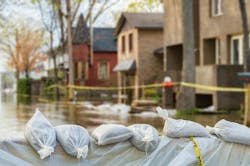Americans Agree on Strict Building Codes for Fire, Flood Zones
Public opinion on climate change shows that Americans care more about the environment than elected officials, according to recently released research. One stance the public holds is the need for a ban on residential construction in flood- or fire-prone areas, according to the New York Times. The large majority of Americans, 73% to be exact, say mandatory building codes should be instituted for risky areas. Another 57% support the idea of making building in risky zones completely illegal and more than half agreed those living in dangerous areas should be paid to relocate.
But while the findings show bipartisan support, more stringent restrictions have been generally opposed by local officials, who cite the cost they would impose on the economy. “There’s a disconnect between public preference and public policy,” said Jon A. Krosnick, a professor of communication, political science and psychology at Stanford University who led the project.
As global greenhouse gas emissions continue to rise, decisions about where and how to build have become increasingly important. If local governments continue to allow homes to go up in places most exposed to climate change, such as coastlines, floodplains or fire-prone wilderness, experts say, it will make generations of current and future residents more vulnerable to worsening hurricanes, floods, wildfires and other disasters.
